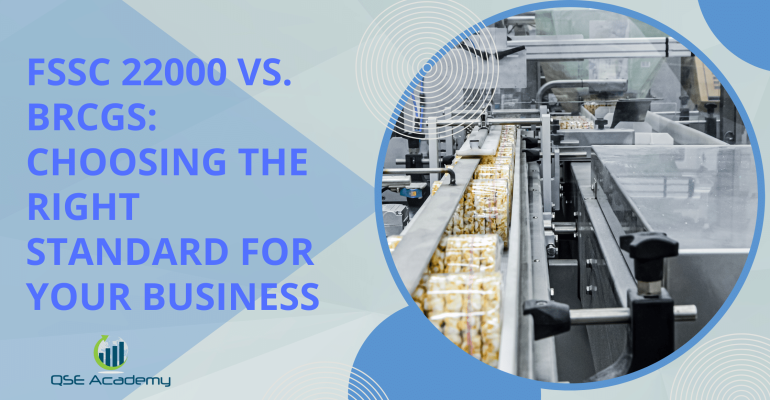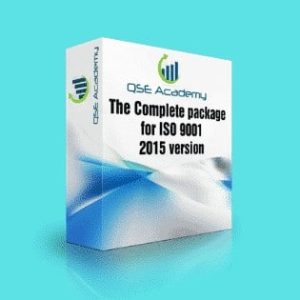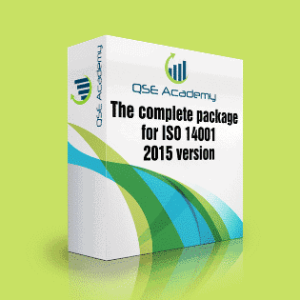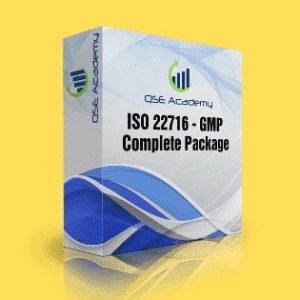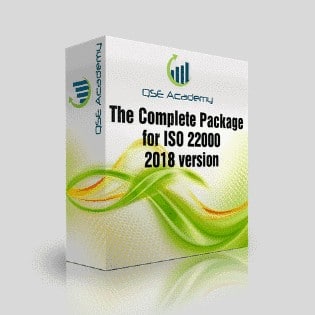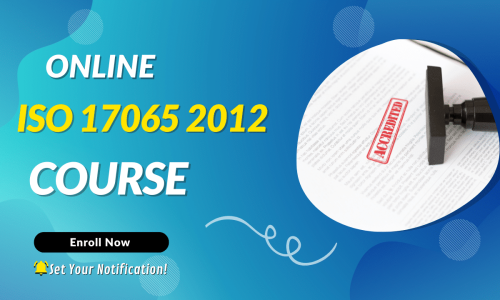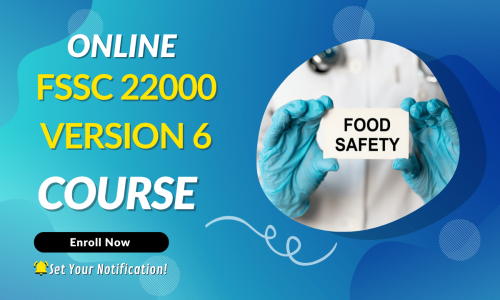FSSC 22000 vs. BRCGS: Choosing the Right Standard for Your Business
Last Updated on October 13, 2025 by Hafsa J.
FSSC 22000 vs. BRCGS: Choosing the Right Standard for Your Business
If you’re in charge of food safety, quality, or compliance, there’s a good chance you’ve asked this question:
“Should we go with FSSC 22000 or BRCGS?”
And you’re not alone. I’ve helped companies in everything from dairy and frozen foods to packaging and logistics face that exact decision. Here’s the reality: both certifications are excellent—but they serve different kinds of businesses in different ways.
One gives you structure and flexibility.
The other gives you strict guidelines and retail-ready polish.
And choosing the wrong one? It can lead to weeks of wasted time, costly rewrites, and a certification that doesn’t quite match how your business actually operates.
In this guide, I’m going to break it all down—clearly, honestly, and from real-world experience. You’ll learn:
-
How FSSC 22000 and BRCGS really differ
-
Which one fits your business model, operations, and buyer expectations
-
And how to avoid common traps that cost companies time and money
If you’re tired of vague comparisons and want a practical answer that helps you move forward with confidence, you’re in the right place.
Let’s dive in.
What Are FSSC 22000 and BRCGS? A Quick Primer
Before we dive into the side-by-side comparison, let’s get clear on what each of these standards actually is—because while they both fall under the GFSI umbrella, they’re built on two very different foundations.
FSSC 22000: The ISO-Based Powerhouse
FSSC 22000 is built on the ISO 22000 management system, combined with sector-specific prerequisite programs (PRPs) and additional FSSC requirements. It’s designed for companies that want structure, risk-based thinking, and flexibility in how they manage food safety.
If you’re already working with ISO standards like ISO 9001 or ISO 14001, FSSC 22000 feels like a natural extension. It lets you design your system around your processes—instead of forcing your processes to match a rigid checklist.
BRCGS: The Retail-Focused, Clause-by-Clause Approach
BRCGS (formerly the British Retail Consortium Global Standard) is highly detailed and prescriptive. It lays out exactly what you need to do, down to specific clauses and grading criteria. It’s especially popular with UK-based and retail-driven customers, who want strict oversight and clear audit scoring.
For businesses that want a well-defined structure—and don’t mind a bit of rigidity—BRCGS offers predictability, transparency, and a very audit-focused approach.
Real Talk from the Field
I once worked with a mid-sized snack food manufacturer deciding between these two. They were already using ISO 9001 and wanted a food safety certification that would align with their systems, not compete with them.
FSSC 22000 was the obvious choice.
Another client—a private label supplier for a UK supermarket—went with BRCGS because the buyer required it and appreciated the grading system that came with it.
Pro Tip
If you like building your own systems and already think in “ISO language,” FSSC 22000 will probably feel like a better fit. If your top customer sends detailed spec sheets and audit scorecards, BRCGS might be the smarter play.
FSSC 22000 vs. BRCGS—Structural Differences That Matter
Once you start looking beyond the labels, the real differences between FSSC 22000 and BRCGS come down to how they’re built, how they’re audited, and how much flexibility you have.
And trust me—these differences matter when you’re implementing the system, training your team, or trying to survive audit week without pulling your hair out.
FSSC 22000: Built Around Your Process
FSSC 22000 is a process-based management system. It follows the structure of ISO 22000, which means it’s:
-
Flexible
-
Systems-driven
-
Focused on continual improvement
There’s no audit scoring, and auditors are looking at how well your system works, not just whether you ticked every box. That gives you more room to adapt the standard to fit your actual workflows.
In practice:
This approach works especially well for companies with ISO systems already in place. You can often integrate everything into one management system—quality, food safety, environment, even health and safety.
BRCGS: Clause-by-Clause, Scorecard Style
BRCGS is a specification-driven standard. You’re expected to follow it literally. Each requirement is written as a clause, and you’re graded during the audit on how well you comply—from AA to Uncertified.
This scoring system can be a double-edged sword:
-
It motivates high performance
-
But it also creates pressure and less room for flexibility
In practice:
BRCGS works well for businesses that thrive under structure—especially if you’re supplying retailers who want clear, consistent audit results across suppliers.
Documentation: Prescriptive vs. Customizable
With BRCGS, expect:
-
More required procedures and forms
-
More prescriptive policies
-
Tighter control on document presentation and traceability
FSSC 22000, by contrast:
-
Gives you more freedom in how you document
-
Focuses more on whether your system is effective—not just how it’s written
Pro Tip
If your team needs a strict rulebook to stay on track, BRCGS delivers that structure. If your team values autonomy and already follows ISO-style systems, FSSC 22000 gives you the breathing room to build something that actually fits.
Which Standard Fits Your Business Type and Culture?
Let’s get real—it’s not just about the technical requirements. Choosing between FSSC 22000 and BRCGS should also depend on how your business operates, how your team works, and what kind of culture you’ve built. Because the best certification is the one that fits you—not the one that just looks good on paper.
FSSC 22000: Best for Process-Driven, ISO-Aligned Businesses
If your company already uses ISO standards like ISO 9001 (quality) or ISO 14001 (environment), FSSC 22000 will feel like home. It’s built on the same management system principles, and that means:
-
Less duplication
-
Easier integration
-
A smoother learning curve for your team
It’s also great for:
-
Exporters working in multiple regions
-
Multi-site operations
-
Manufacturers with lean or custom processes
Real example:
I worked with a manufacturer that had ISO systems running in parallel. They went with FSSC 22000 and were able to integrate food safety into their existing platform—no need to rebuild everything from scratch.
BRCGS: Best for Retail-Focused, Compliance-Driven Operations
If your main customers are retailers, especially in the UK or Europe, BRCGS might already be on your radar. It’s well-known in retail circles for its detailed structure and clear audit scores.
It works well for companies that:
-
Prefer detailed checklists and structured expectations
-
Want to benchmark performance with audit grading
-
Need to meet strict buyer specs and private label programs
Real example:
One of our clients supplies a major UK grocery chain. That buyer only accepted BRCGS. The structure made sense for their in-house compliance team—and helped them manage dozens of supplier audits per year with consistency.
Company Culture Plays a Big Role
Let’s say you run a small- to mid-sized food business with hands-on leadership and a flexible culture. FSSC might give you the freedom to tailor things your way.
But if your company is highly formal, regulated, or buyer-driven—BRCGS could be the stronger choice, even if it’s more work upfront.
Pro Tip
Don’t underestimate team alignment. The right certification isn’t just about passing an audit—it’s about creating a system your people will actually use. If your staff resists rigid structures, BRCGS might frustrate them. If they struggle without strict guidance, FSSC might feel too open-ended.
Buyer Expectations and Market Acceptance
Let’s say you’ve narrowed it down to two solid options—FSSC 22000 and BRCGS. Now ask yourself this:
What do your customers expect?
Because in many cases, they’re the ones making the final call.
Some Buyers Want FSSC 22000—Period.
If you’re selling into Europe, Asia, or the Middle East, especially to manufacturers or foodservice chains, FSSC 22000 is often the preferred standard. It’s built on ISO logic, globally accepted, and widely recognized across different regulatory systems.
Examples of who prefers FSSC 22000:
-
Large international buyers in B2B food manufacturing
-
Government buyers with public health procurement standards
-
Retail chains in Asia and the Middle East with ISO-based frameworks
Real-world story:
I helped a snack food exporter move from ISO 22000 to FSSC 22000 after they lost a tender to a competitor. The reason? The buyer required a GFSI benchmarked scheme—and FSSC hit the mark.
Retailers Often Push for BRCGS
On the flip side, UK retailers and European private label buyers often expect BRCGS. The scoring system, structured format, and focus on product quality (not just safety) align well with their supplier approval processes.
Examples of who prefers BRCGS:
-
UK-based grocery chains
-
European private label programs
-
Importers managing large supplier networks
From the field:
One packaging company I worked with tried to get into a UK-based supermarket’s supply chain. They had FSSC—but were told point-blank: “Come back with BRCGS.”
Export Goals Matter
If you’re planning to export—or already do—check which certifications are accepted in your target markets. Some regions recognize both. Others may lean strongly in one direction.
Pro Tip
Talk to your top three customers or distributors and ask them directly:
“Which GFSI standard do you require or prefer?”
That one question could save you months of back-and-forth—and help you choose the standard that actually gets you on the approved vendor list.
Audit Style, Documentation Load, and Maintenance Effort
Let’s say you’ve chosen your standard—or you’re leaning toward one. Now comes the part that really affects your day-to-day:
How do the audits actually work? What’s the workload like? And how much effort will it take to maintain certification year after year?
Here’s what to expect with each.
FSSC 22000: More Flexibility, Less Formal Grading
FSSC 22000 audits follow the ISO management system approach. That means:
-
There’s no pass/fail scoring system
-
Nonconformities are classified as major or minor
-
The focus is on how well your system works—not how well it fits a checklist
Auditors look at:
-
Process performance
-
Risk management
-
Whether your team understands and applies the system
What this means in real life:
Your audit is more conversational, and you can explain your rationale if you do something a bit differently. As long as it’s effective and compliant, you’re good.
BRCGS: Score-Based and Strictly Structured
With BRCGS, audits are highly prescriptive and graded. You’ll get a rating like AA, A, B, C, D—or even Uncertified.
You’re assessed on:
-
Clause-by-clause compliance
-
Mandatory unannounced audits (depending on the program)
-
Clear expectations for documentation, labeling, and presentation
What this means in real life:
There’s less wiggle room. BRCGS wants things done exactly as described. If you miss a clause, you lose points—simple as that.
Documentation Requirements: Prescriptive vs. Customizable
FSSC 22000 gives you flexibility in how you document your system. You still need procedures, records, and controls, but you design the format.
BRCGS requires more:
-
Specific documents for each clause
-
Formal policies, statements, and forms
-
Structured quality manuals that match their framework
Heads-up:
BRCGS requires more prep work up front. But for companies that like having a clear structure—it works.
Maintenance: Surveillance vs. Performance Tracking
-
FSSC 22000 uses annual surveillance audits to monitor ongoing compliance. You’re expected to continually improve, but the style stays collaborative.
-
BRCGS requires you to maintain or improve your audit score—or explain why not. This can drive continuous improvement, but also adds pressure.
Pro Tip
If your team thrives on flexibility and innovation, FSSC audits will feel more natural. If your team performs better with a detailed playbook and a clear grading system, BRCGS offers the structure to support that.
Pro Tips and Expert Insights: What I Tell Clients Before They Choose
After years of helping businesses implement both FSSC 22000 and BRCGS, I’ve seen the same concerns pop up again and again. Here’s the advice I give every client—whether they’re a startup food brand or a multi-site operation with global buyers.
Pro Tip 1: Already ISO 22000 Certified? FSSC 22000 Is the Fast Track
If you’ve built your system around ISO 22000, moving to FSSC is a smart next step. Most of your structure is already in place—you’ll just need to add the FSSC-specific requirements and the right PRPs.
It’s one of the most cost-effective upgrades in food safety certification.
Pro Tip 2: Ask Your Top Buyers What They Expect
Don’t rely on assumptions. If your biggest customer wants BRCGS, you won’t get far with an FSSC certificate—and vice versa. A quick conversation with your buyers will often make the decision for you.
One client avoided a full system overhaul just by asking one clear question.
Pro Tip 3: Pick the System That Matches Your Internal Culture
This might be the most overlooked piece. If your team thrives with flexibility, innovation, and continuous improvement, FSSC 22000 will probably suit them better. If they want exact direction, a checklist, and a score to chase, BRCGS delivers that.
When the system fits the people, it actually gets used—not just filed away for audit day.
Pro Tip 4: Don’t Mix and Match Without a Plan
Trying to blend elements of both systems—like using BRCGS documents with an FSSC audit—isn’t impossible, but it gets messy fast. Each standard has its own logic and structure. If you’re switching, commit fully and plan for transition time.
Pro Tip 5: Plan for the Audit Style You’re Most Prepared For
FSSC auditors will ask about your processes and expect real engagement. BRCGS auditors are looking for clause-by-clause evidence and strict conformance. If your team is more used to being “interviewed,” FSSC might feel more natural. If they prefer clear checklists and scoring, BRCGS will guide them better.
Common Mistakes and FAQs
Even experienced teams can hit the wrong note when choosing a food safety certification. These are the slip-ups I’ve seen most often—and the questions I get in nearly every kickoff meeting.
Common Mistakes to Avoid
Mistake 1: Choosing Based on Popularity, Not Fit
Just because your competitor uses BRCGS doesn’t mean you should too. Choose the standard that supports how you operate—not just the one that looks impressive on LinkedIn.
Mistake 2: Overlooking Buyer Input
I’ve seen businesses spend six months prepping for FSSC 22000—only to find out their main buyer won’t accept it. A two-minute email could’ve saved six months of work.
Mistake 3: Underestimating the Documentation Requirements of BRCGS
BRCGS requires detailed, clause-specific documentation. If your team isn’t ready to maintain that level of structure year-round, it can become overwhelming fast.
Mistake 4: Assuming They’re Interchangeable
Yes, both are GFSI-recognized. But they are not plug-and-play substitutes. They have different logic, audit styles, and cultural expectations.
Frequently Asked Questions
Q1: Which standard is easier to implement—FSSC or BRCGS?
It depends. If you’re ISO-savvy and have flexible systems, FSSC 22000 may be quicker. If you prefer detailed step-by-step expectations and don’t mind being prescriptive, BRCGS can be easier to follow. It’s about alignment—not difficulty.
Q2: Can I switch from one standard to the other later on?
Yes, but it’s not seamless. Each system has different documentation, audit scopes, and philosophies. You’ll need a proper transition plan—ideally with a consultant who knows both sides well.
Q3: Are both accepted globally?
Yes—but with nuances. BRCGS is especially strong in the UK and Europe, while FSSC 22000 has broader ISO-based acceptance across global markets and manufacturing sectors.
Q4: Will my team need retraining if we change standards?
Most likely, yes. FSSC focuses more on systems and process understanding, while BRCGS emphasizes compliance and clause-based requirements. The mindset shift alone deserves structured onboarding.
Choose the Standard That Works for You
Here’s the truth I’ve seen play out over and over again:
There’s no “better” standard—only a better fit.
FSSC 22000 and BRCGS are both respected, GFSI-recognized certifications. They both help you build trust, improve food safety systems, and open doors to bigger markets. But they serve different purposes, and they expect different things from your team.
-
If your operations are already ISO-aligned, flexible, and systems-driven—FSSC 22000 is likely the smoother path.
-
If your buyers are retail-focused and expect detailed audits and grading—BRCGS may be your best strategic move.
Either way, the right choice will support your business—not just satisfy an auditor.
Why This Advice Matters
I’ve spent over a decade helping companies make these exact decisions—and implement the systems that follow. This isn’t theory. It’s the same guidance I give during real-world projects that impact real bottom lines.
Your Next Step
Still weighing your options?
Let’s make it easy.
Get in touch for a free certification fit assessment—and we’ll help you map out which path makes the most sense for your business goals, customers, and internal capabilities.
Or download our side-by-side comparison checklist to start the conversation with your team.
Choosing the right standard doesn’t have to be stressful.
It just needs to be intentional.
Let’s figure it out together.
Whether it’s ISO 9001, ISO 22000, or the cosmetics-focused ISO 22716, I’ve spent my career I’m not here to call myself an expert—I prefer “enthusiast” because I truly love what I do. When I’m not writing about standards, you’ll probably find me playing Piano 🎹, connecting with people, or diving into my next big project💫. I’m an engineer specialized in the food and agricultural industry
make ISO standards less intimidating and more approachable for everyone.
turning complex jargon into clear, actionable steps that businesses can actually use.
There’s something incredibly rewarding about helping people navigate food safety and quality management systems
in a way that feels simple, practical, and even enjoyable.
I have a Master’s in QHSE management and over 12 years of experience as a Quality Manager
I’ve helped more than 15 companies implement ISO 9001, ISO 22000, ISO 22716, GMP, and other standards
My clients include food producers, cosmetics manufacturers, laboratories, and service companies
I believe quality systems should be simple, useful, and efficient.

